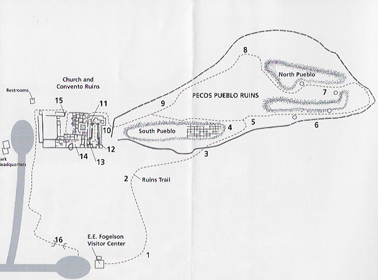
Location
On trail after Kiva #3 (N35D33'07.799 X W 105D41'23.508)
Flowers first observed: 8/11/17
Plant w/Flowers

The Flowers

Distribution
"Western South Dakota, Wyoming, and Utah, to New Mexico and Arizona." (SEINet)
Description
"Herbaceous perennials simply branching, stems to 40 cm tall, often curved at the base, hirsute or glabrate below, minutely glandular to stipitate glandular, with fibrous roots and a woody caudex. Leaves: Alternate, basal leaves oblanceolate, obovate, or oval, to 5 cm long, narrowing to a petiole, glabrate to ciliate, cauline leaves smaller and often sessile. Flowers: Heads small, radiate, the rays blue, rarely pink or white, 75-150, 7-15 mm long, coiling or not, the disk yellow, 15-18 mm wide, the involucre 5-8 mm high, the phyllaries equal, in 2-3 series, glabrous to somewhat villous, minutely to noticeably stipitate glandular, inflorescences solitary or few on each stem. Fruits: Achenes 2 nerved, hairy. Pappus sparse, of subequal capillary bristles, the inner of 15-25 long bristles, the outer of short, stiff bristles." (SEINet)
Ethnobotanical Uses
None Specific
Medicine:
Fleabane, Hoary - Erigeron canus
"Navajo, Ramah Ceremonial Medicine Plant used in ceremonial chant lotion. Disinfectant Plant used for 'deer infection'." (Moerman 218)
Fleabane, Trailing - Erigeron flagellaris
"Navajo, Ramah Ceremonial Medicine Cold infusion of leaves used ceremonially as a medicine and as a fumigant. Dermatological Aid Poultice of chewed leaves applied to spider bites and used as a hemostat. Disinfectant Cold infusion of leaves used ceremonially for 'lightning infection.' Hemostat Poultice of chewed leaves applied as a hemostatic. Snakebite Remedy Compound poultice of plant applied to snakebite. Veterinary Aid Cold infusion of leaves used aas eyewash for livestock." (Moerman 218-9)
Internet Links